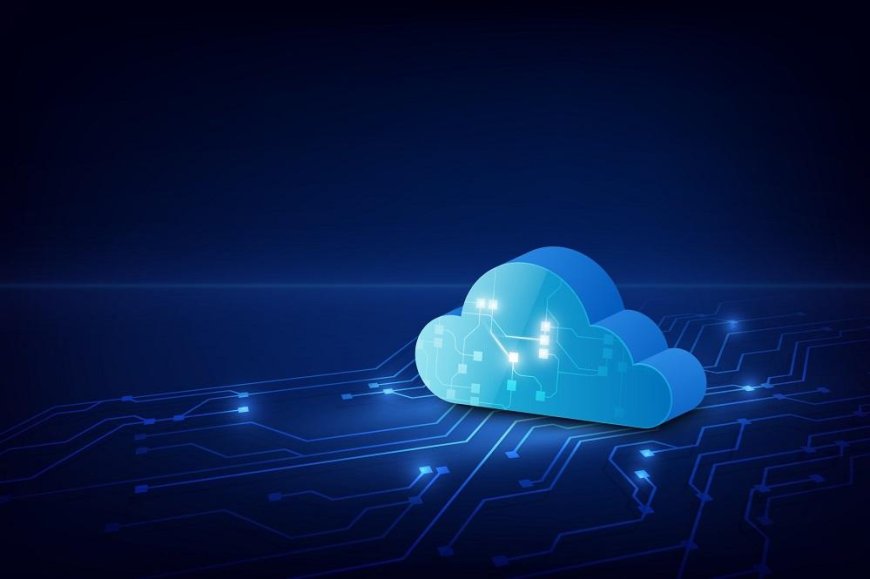Cloud computing what is it?
Cloud computing compound of hardware and software resources available on the Internet as managed external services. These

Cloud computing compound of hardware and software resources available on the Internet as managed external services. These services rely on advanced software and high-end server computer networks. Service providers create cloud computing systems to meet the general needs of business or research. Examples of cloud computing include:
Virtual IT (Information Technology): Configure and deploy remote external servers as an extension to the company's local IT network.
Software: Use commercial software or develop and remotely deploy your own applications.
Network storage: Network storage archives data over the Internet to a provider without knowing the physical storage location.
All the cloud computing systems are designed typically to support on strong demand and a large numbers of customers.
Software models as services
Cloud services that use the software model as a service, or SaaS, provide fully functional programs for end users, even though the programs may not reside on their local computers. Email providers such as Gmail and Outlook.com are SaaS applications, as well as almost any computer program running in the browser. Thus, SaaS is most common for home consumers.
Platform models as services
The SaaS solution is at the top of the platform. Vendors who offer platform portfolios as a service typically encounter corporate customers. PaaS products include virtual servers, operating environments, database environments, and any other middleware component that is located between the hardware and the consumer-oriented program.
Infrastructure models as services
The platforms, in turn, sit on the infrastructure. Infrastructure as a service solutions usually reach the level of "simple metal" - physical servers, network components and storage of devices required for the operation of platforms (and, consequently, services). IaaS is popular with corporate customers, a trade-off between speed, cost and privacy that each vendor balances differently.
Examples of cloud computing services
- Many different providers offer different types of cloud computing:
- Amazon EC2 - virtual IT
- Google App Engine - application hosting
- Google Apps and Microsoft Office Online - SaaS
- Apple iCloud - Network storage
- DigitalOcean - Servers (Iaas / PaaS)
Some providers offer cloud computing services for free, while others require a paid subscription.
How cloud computing works
The cloud computing system stores its important data on Internet servers, rather than distributing copies of data files on individual client devices. For example, cloud video sharing services, such as Netflix, transmit data over the Internet to the player on the viewer, rather than sending physical DVDs or BluRay discs to customers.
Must Read: What is a calculation?
Cloud computing uses devices to access applications that use platforms that are supported by the infrastructure.
Customers must be connected to the Internet to use cloud services. For example, some video games on the Xbox network service can only be obtained online (not on a physical disk), while some other games also cannot be played without a connection. Some industry observers expect cloud computing to grow steadily in the coming years. Chromebooks are one example of how all PCs can evolve in the future in line with this trend - devices with minimal storage space and multiple on-premises applications other than a web browser (which provides access to Internet applications and services).
Cloud computing pros and cons
Like any new destructive technology, cloud computing offers strengths and weaknesses that developers and consumers need to carefully evaluate. Service providers are responsible for installing and maintaining the underlying cloud technology. Some business customers prefer this model because it limits their own burden of having to maintain infrastructure. Conversely, these customers abandon control of system management, relying on a vendor that provides the required level of reliability and performance. Similarly, home users are becoming more dependent on their ISP in the cloud computing model: Temporary disconnections and lower broadband speeds, which are a minor inconvenience today, are becoming a significant problem in a completely cloud world. On the other hand, say proponents of cloud technology, such an evolution is likely to force ISPs to continue to improve the quality of their services in order to remain competitive. Cloud computing systems are usually designed to closely monitor all system resources. This, in turn, allows suppliers to charge customers a fee proportional to their network usage, storage and processing. Some customers prefer this calculated billing rather than saving money, while others prefer a fixed subscription to provide the estimated monthly or annual costs. Using cloud computing environments usually requires sending data over the Internet and storing it on a vendor-managed system.
The risks of confidentiality and confidentiality associated with this model should be weighed against the benefits and alternatives.
The result for consumers
The average non-IT consumer will benefit from SaaS / PaaS / IaaS technology due to lower cost, faster deployment time, and the increased flexibility these solutions offer. While some people prefer to have a license instead of unchangeable software, others are content to use subscription-based software that requires an Internet connection.
